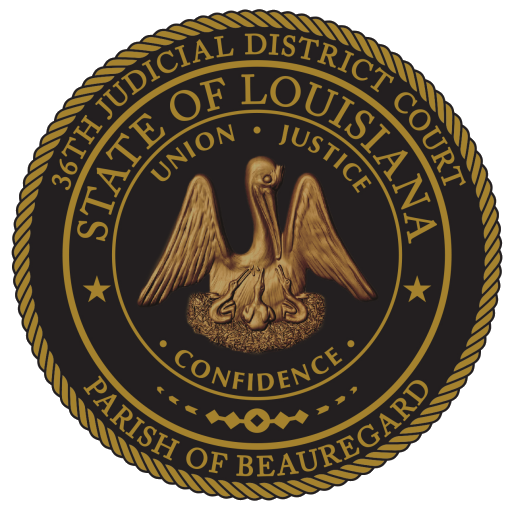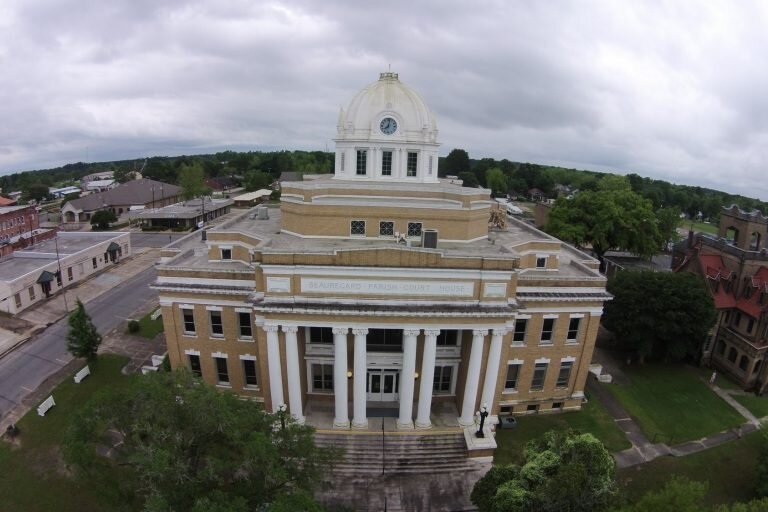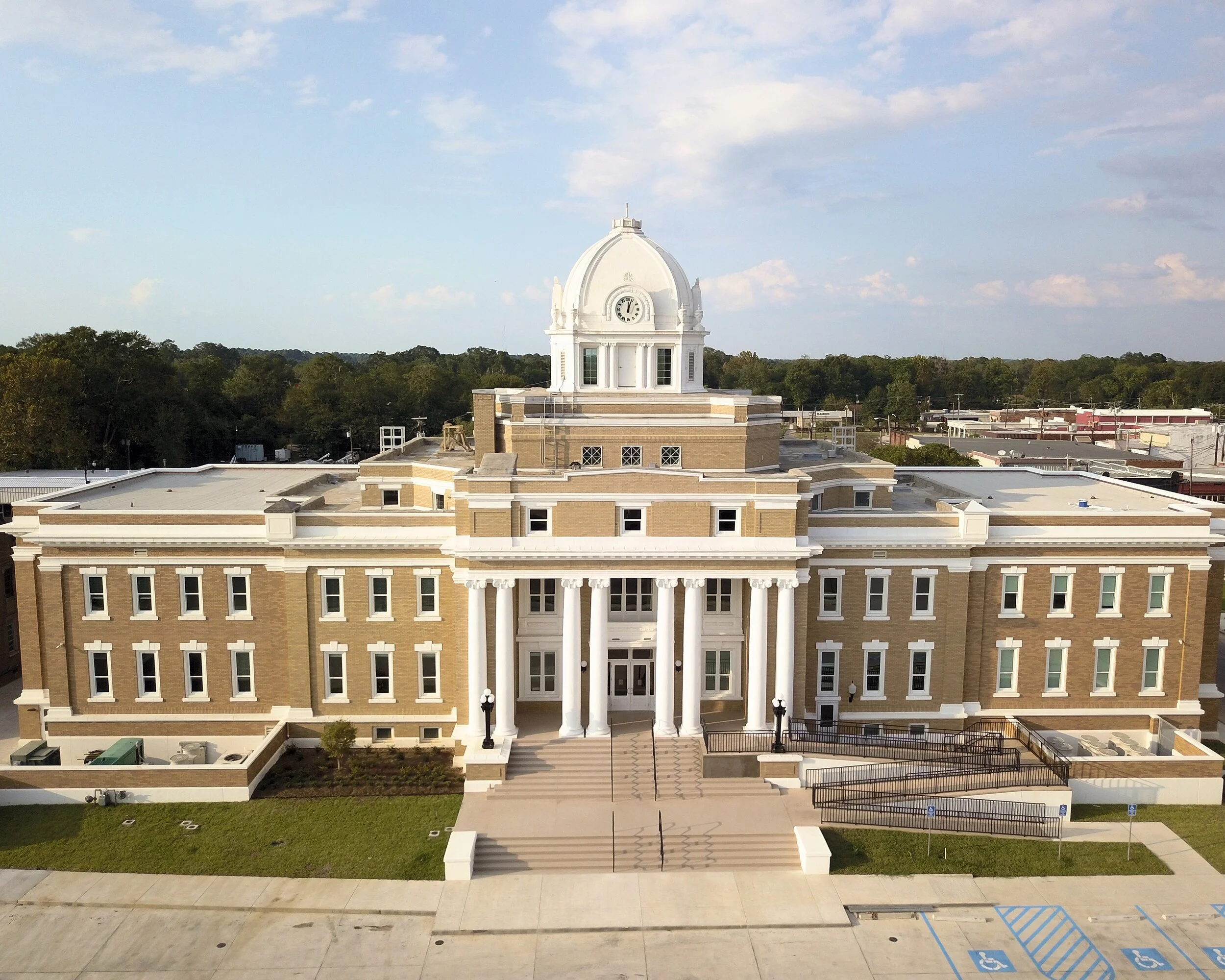History
Beauregard Parish is located in what was the northwest corner of Opelousas County, created in 1806 as a division of the Territory of Orleans. With the inception of the parish form of government in 1807, the area of Opelousas was called St. Landry Parish. The boundaries of St. Landry were not altered until 1840 when the western portion (including what is now Beauregard Parish) was designated as Calcasieu Parish.
Original Courthouse
Beauregard Parish was created June 12, 1912 from the Parish of Calcasieu. The parishes of Allen and Jefferson Davis were created on the same day and the three were the last parishes created of the present 64 parishes. Beauregard was initially placed in the Fifteenth Judicial District and it remained there until 1921 when it became a part of the Fourteenth Judicial District. In 1956, the Thirtieth Judicial District was created composed of the parishes of Beauregard and Vernon. The Thirty-Sixth Judicial District was created in 1979 composed of only Beauregard Parish. The court had one judge until 1997 when a second judge was added.
The original Courthouse dates back to 1914, and in addition to the judicial staff and clerk of court, housed parish officials, including the policy jury, the school board, the sheriff and tax collector, and the district attorney.
In 2009, Judges Martha Ann O’Neal and C. Kerry Anderson, together with the District Attorney, David W. Burton, saw a need for renovations to the aging courthouse. The need for an elevator was pressing as there was no access to areas in the courthouse for disabled individuals. Further, the facilities were not adequate for modern functioning.
A Citizens Committee was appointed to investigate the options and recommended renovation and annex construction. The voters of Beauregard Parish approved a sales tax to pay for the construction with 69% supporting the tax.
The renovated Courthouse officially resumed business on September 5, 2017. It gloriously combines new, modern facilities with the original architectural beauty from more than a century ago. The construction includes additional space in anticipation of future growth.
In the main courtroom, the mural and crest were painstakingly restored, and the stained glass dome, hidden for decades, is once again visible.
Renovated Courthouse Reopened September 5, 2017
Mural and Crest in Main Courtroom
Stained Glass Dome




